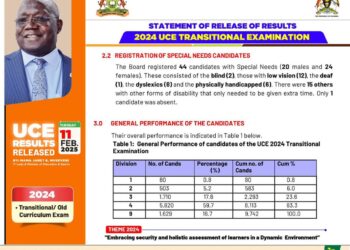Some of the most influential factors that affect a vehicle’s fuel efficiency depend on a fixed number, such as engine size or cargo weight. However, the vehicle’s mechanical condition, how it is driven, the environment, and driving conditions also contribute to the overall fuel efficiency.
Fortunately, proper maintenance and driving habits can help you improve your vehicle’s gas mileage by roughly 10%.
How can I reduce my fuel costs?
With the government unlikely to reduce fuel duty any time soon, it’s worth thinking about how you can use less fuel.
Confused about where to start?
Here are some of the most common ways in which you can improve your fuel efficiency and reduce consumption.
1. Remove excess weight
You can reduce fuel consumption by removing excess weight from your car.
You can do this by removing your roof rack when you aren’t using it and disposing of any rubbish.
Footballs, deckchairs, toys and so on might be handy from time to time, but they cost you money to transport.
The trick to reducing what you spend on petrol and diesel is to make a series of small changes, starting with a boot clear-out.
2. Reduce drag
It’s the middle of summer and the inside of your car is like a sauna. But do you roll the windows down or switch the air conditioning on?
Either method of achieving an ambient temperature can be wrong, depending on your speed.
Air conditioning uses fuel, and having the windows down causes drag, which uses up fuel too.
Well, here’s what to do. At low speeds, open the window – the fuel used to compensate for drag is less than the fuel used to power your air con.
While driving on the motorway, however, it’s the other way around. So turn on the climate control – the fuel used to compensate for drag is greater than the fuel required to have the air conditioning on.
The tipping point for this is around 30 mph.
3. Inflate tyres to the correct pressure
If you can’t tell from how your car handles that your tyres aren’t the right pressure, then your fuel economy should tip you off.
The surface area that’s in contact with the road increases when a tyre is under-inflated.
The more surface area in contact with the road, the more drag on the wheel.
Research has found that a tyre just 10 PSI under the recommended level can increase fuel consumption by 2.5%.
4. Only top up your tank with as much fuel as you need
As annoying as it is to regularly top up your fuel, it does help you get more miles for your money.
Only topping up with what you need and avoiding having a full tank means the fuel you do have goes slightly further.
To make it easier to judge the correct amount of fuel, keep a notebook in the glove box.
When you fill up, write down how much fuel you put in to get from A to B. Note this in litres, not in pounds, as the price is always changing.
Some fuel tanks can take up to 109 litres, so that’s a significant amount of extra weight to carry around. You wouldn’t leave 109 litres worth of bottled water in your boot, would you?
5. Plan your trip ahead
Before setting off on a journey, try and plan when you will need to refuel and where you will go to do so.
This should help you to avoid letting your fuel run low as it may result in you panic-buying at the nearest, most expensive station.
To find the cheapest fuel near you, use our handy petrol price comparison tool.
6. Fill up with your vehicle’s recommended fuel type
When it comes to getting the best performance from your car, there’s a notion that super fuel, or high performance fuel, is best.
Super fuel, also known as premium fuel or high performance fuel, is petrol with a higher octane rating.
Most standard brands of fuel have a 95 octane rating. Whereas super fuel typically has a rating of around 98. This can make the engine work more efficiently and improve performance.
While super fuel may work best for some cars, manufacturers test their vehicles for the most ideal fuel type.
So, if your car manual says you should use ‘normal’ unleaded fuel, or another fuel with a not-so-high octane rating, then you should trust it.
7. Take advantage of vouchers and cashback credit cards
Supermarkets often compete to try and encourage you to use their station.
Keep an eye out for vouchers that give you money off your fuel spending and use them when you fill up.
Meanwhile, some credit cards offer cashback on fuel spending.
So shop around for the best deals.
8. Go easy on the accelerator
Your driving style can have a big impact on how much petrol or diesel you use.
To improve your fuel economy, the Institute of Advanced Motorists has the following driving tips.
Try to keep your driving smooth. Gentle acceleration and using the highest safe gear will use less fuel.
What’s more, when you approach traffic lights, ease off the accelerator early if the lights are red. Why hurry up to wait?
This style of driving, where harsh or rapid accelerating is minimised and gears are used efficiently, is often known as ‘eco-safe driving.’
It will not only help you use less fuel, which is better for you and the environment, but it tends to be safer too – hence the name.
9. Avoid prolonged idling
Running your engine at idle consumes roughly half a gallon to about a gallon of fuel every hour, not to mention the carbon dioxide pumped into the atmosphere.
This means you’re burning about 1.067 to 2.13 ounces of fuel every minute you’re idle.
With modern cars being more efficient nowadays, you’re likely to burn less fuel by simply turning off your engine, then restarting it when you have to move again.
10. Use engine stop/start
A handy alternative on some modern cars to switching your engine off is to use the car’s engine stop/start system.
If you keep your foot on the clutch when you stop at traffic lights, for example, the engine will continue to burn fuel.
However, take it off (with the car in neutral) and the car’s stop-start system will kick-in, saving you fuel and money.
Do you have a story in your community or an opinion to share with us: Email us at editorial@watchdoguganda.com













